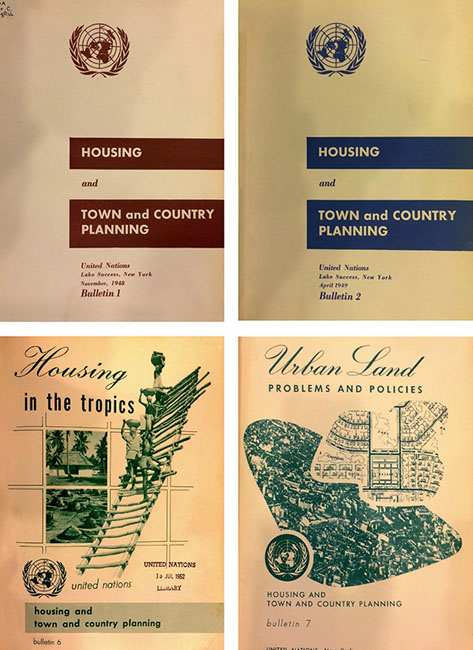Betaalbaar wonen als ontwikkelingshulp
Michel Écochard: nieuwe rollen en benaderingen van de transnationale architect
Samenvatting
Het was geen toeval dat de Economische en Sociale Raad van de Verenigde Naties (ECOSOC) in 1948, enkele jaren na de oprichting van de Verenigde Naties als organisatie, besloot een afdeling Housing and Town and Country Planning op te zetten. Deze afdeling was een centraal onderdeel van het grotere zogenaamde ‘programma voor technische ondersteuning’ dat de Verenigde Naties had ontwikkeld om landen in nood te helpen – uiteenlopend van Europese landen in de nasleep van de Tweede Wereldoorlog tot nieuwe, onafhankelijke natiestaten in Afrika en Azië. De leden van de Raad waren het erover eens dat betaalbare huisvesting zowel tot de universele rechten van de mens behoorde als een van de belangrijkste punten van zorg was van de nieuwe organisatie. Interventies op dit terrein zouden tot haar fundamentele taken gaan behoren.
De afdeling Housing and Town and Country Planning (HTCP) werd vanaf haar oprichting tot 1966 geleid door een voormalig lid van de Congrès Internationaux d’Architecture Moderne (CIAM), de Joegoslaaf Ernest Weismann. De nieuwe afdeling werd in de eerste plaats gedefinieerd als een expertiseplatform: overal ter wereld zouden de diverse lidstaten kennis over betaalbare huisvesting verzamelen. Op basis van dit perspectief wist HTCP uiteenlopende professionele kampen van architecten en stedenbouwkundigen te verenigen, en bracht ze overheidsdiensten en avant-gardistische groepen bij elkaar. Ook organisaties die elkaar eerder op ideologische gronden maar al te graag op afstand hadden gehouden, zoals de CIAM en de International Union of Architects (IUA).
De verzamelde kennis werd op verschillende manieren beschikbaar gesteld aan de lidstaten: via de publicatie van handboeken en een bulletin, door het openen van een bibliotheek en het beheren van een mediatheek met films over verschillende vormen van huisvesting wereldwijd. Naast haar functie als expertiseplatform richtte HTCP zich ook op concrete interventies. Zij stuurde stedenbouwkundigen, architecten, ingenieurs en technici erop uit om regio’s, landen of steden die in nood zaten te hulp te schieten. In de decennia na 1948 zou de afdeling HTCP honderden missies initiëren, trainingen organiseren, plannen opstellen voor regio’s en steden, en zelfs gebouwen ontwerpen voor allerlei contexten en locaties. De talrijke stedenbouwkundige plannen, wijken en gebouwen die uit deze ‘ontwikkelingshulp’ resulteerden, waren binnen de architectuurkritiek en architectuurgeschiedenis lange tijd onbespreekbaar. Men vond de plannen en projecten vaak te instrumenteel en te technisch om van enig cultureel belang te zijn.



